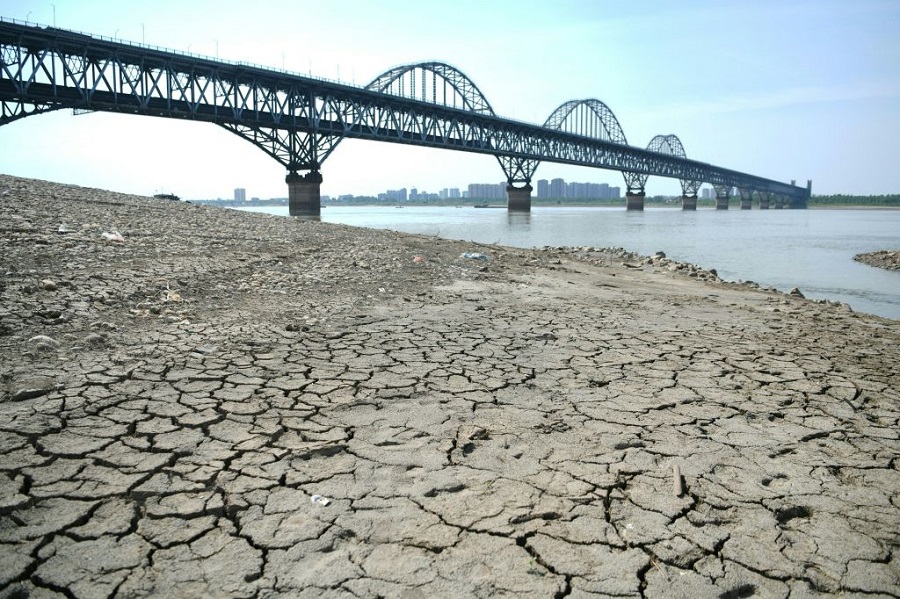
The world is facing an imminent water crisis. A recent report from the Global Commission on the Economics of Water warns that global demand for fresh water is on track to outstrip supply by 40% by the end of this decade.
The sharing of water resources between states can exacerbate geopolitical tensions. Water is inherently linked to economic development, climate change and population growth, and it can move across political boundaries and fluctuate in volume throughout the year. Access to and control over waterways and bodies of water can provide strategic backing and domestic stability to a country. That in turn can give it leverage over others and a greater influence on military projection and trade.
In Asia, much of the water comes from the Tibetan Plateau and the surrounding Hindu Kush-Himalayan region known as the ‘Asian water tower’, the source of 10 major rivers. The area holds the world’s third-largest reservoir of snow and ice after the Arctic and Antarctica and provides fresh water to nearly 2 billion people, or around 25% of the global population.
But it’s still not enough. More than 50% of the global population live in Asia, but the region’s freshwater supplies only stretch to 3,920 cubic metres per person per year—less than any continent other than Antarctica. The impacts of climate change, rapid population growth and competing demands for water from households, agriculture and industry are putting increasing pressure on Asia’s limited water resources.
The problem is exacerbated by mega-hydroengineering projects such as hydropower dams on major cross-border rivers. As well as imposing a sense of power and nationalism, these projects can increase fears of water scarcity in riparian states, increasing competition for access to and control of resources. China, an ‘upstream superpower’ and regional hydro-hegemon, has built many hydropower dams on cross-border rivers while neither adopting an independent transboundary river policy nor signing an international transboundary-governing water treaty. This has alarmed countries downstream. But China isn’t alone—India, Tajikistan and Laos have also pursued an engineering-focused approach to domestic water management much to their neighbours’ concern.
On top of this, Asian countries have to worry about climate-change-induced weather events worsening water stress, water pollution and groundwater exploitation, which significantly destabilise water, food and energy supplies.
In 2022, the Yangtze River basin drought in China affected an estimated 900 million people across 17 provinces. It also threatened the overseas industrial supply chain, particularly to Europe and the US, as factories shut down and water levels in China’s rivers became too low for ships to move. The Yangtze carries annual cargoes of more than 3 billion tonnes, so the drought forced China to substitute large numbers of trucks to do the job.
Water stress will worsen in the coming years. Under current trajectories and trends, freshwater resources will continue to diminish, intensifying competition for resources in individual countries and across borders. Ongoing national projects to divert water, such as China’s Red Flag River project, will further impact supplies in neighbouring countries.
The region isn’t doing enough to address this issue—policies are weak and there’s a lack of robust collaboration between governments. Asian nations must treat water as a common good and improve water management practices, not only to tackle the current crisis and meet future demand, but also to avoid creating socioeconomic instability and political turmoil.
Domestically, countries need to garner institutional support, improve water efficiency and invest in alternative solutions such as water reuse for potable and non-potable supplies. They also need to build frameworks that acknowledge water’s central role in shaping economic, socio-cultural and environmental changes, as well as increase public awareness and set up education programs.
Regionally, governments must coordinate policies, collaborate on joint projects and share real-time data. This is particularly important in dealing with extreme weather events such as floods, because it will allow riparian countries to better manage domestic resources and reduce risk exposure to cross-border stresses. It will also help ease tensions between upstream and downstream countries and encourage riparian countries to avoid overdependence on cross-border water resources. Bilateral and multilateral organisations in the region should also make water cooperation and related diplomacy initiatives a leading priority.
Water insecurity is set to become one of the major geopolitical issues of this century, particularly in Asia. Governments must act now and adopt a more radical approach to valuing and managing water supplies.

